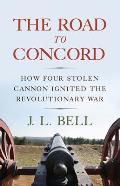“Wiggle Your Ears” (
IMDB;
YouTube;
Lucky Corner) was a weird entry in the Our Gang series.
The storyline was not only adult, it was bleak.
Mary is infatuated with Harry because he can wiggle his ears. He treats her like dirt, making her crack his nuts and mend his pants. One line of Harry’s dialogue is even, “You got any money today, woman?”
Joe craves Mary’s attention, but he can’t wiggle his ears.
Pretty blonde Jean comes along. She also likes Harry’s ears, and Harry likes her. He doesn’t just toss Mary aside; he has her buy ice cream for him and Jean and then push them in his go-cart. Mary blubbers her woes through a donut. Farina advises her to doll herself up as a flapper.
Mary paints her cheeks and rolls down her stockings. But that “vamping” doesn’t work. Harry just takes her ring so he can marry Jean (shown in Mary’s imagination).
Meanwhile, Wheezer grudgingly helps his older brother Joe fake the feat of wiggling his ears with tape and string. (This was in fact how the Hal Roach Studios did the ear-wiggling trick.)
Mary becomes Joe’s girl, though that relationship is based on a lie. Harry’s ears get cramped as Jean makes him carry her doll and push her in the go-cart. The End.
Underscoring that bleak plot is how Robert F. McGowan shot nearly the whole movie in tight close-ups. So we get a clear view not only of the boys’ wiggling ears, but of Wheezer’s raspberries, Jean’s eye-batting, Harry’s underpants, and even a fly landing on Mary’s cheek. The result is almost Expressionist in its intensity.
In their book on the series, Leonard Maltin and Richard W. Bann wrote that “Wiggle Your Ears” is “an amusing but absolutely bizarre two-reeler.” The story spoofs adult relationships. There’s even an odd moment when Harry seems to be in orgasmic ecstasy while being licked by a cat. But as the kid actors play the situation straight, the close-up shots convey their emotions stronger than the parody.
At this time, several years into the Our Gang series, Bob McGowan was trying out unusual filmmaking techniques in various shorts. “Yale vs. Harvard” included lots of shots upward through glass. “The Spanking Age” cut all the adults’ heads out of the frame. “Cat, Dog & Co.” features a surreal dream sequence with giant chickens. “Wiggle Your Ears” is one of that set.
Some of those Our Gang pictures are lost. They weren’t released by Pathé, which produced additional 16mm prints for markets outside of cinemas. They didn’t have sound like the later MGM releases which got reproduced for television. And a fire at MGM in 1965 destroyed a lot of negatives. Thus, we can’t actually see how weird some of those late silent movies were. But we can see “Wiggle Your Ears.”
McGowan might have simply been in the mood to try something different. And a peek behind the scenes offers another reason for why “Wiggle Your Ears” was made as it was.
At the end of 1928, Hal Roach Studios was under pressure to finish all the shorts it had promised to MGM for the spring season before the place shut down for five weeks.
At the Laurel and Hardy unit, “Liberty” had taken more time than expected, so in one month they rushed through both “That’s My Wife” and “Big Business.” The former has a well-worn premise that hinges on pleasing a rich uncle (Our Gang’s “Baby Clothes” was one precursor). The latter took inspiration from the Christmas season and needed very little plot at all.
For the Our Gang unit, the solution was overlapping productions, as recorded at the Lucky Corner website. Bob McGowan shot “Wiggle Your Ears” on a short schedule from 4 to 12 December. His nephew and namesake Robert A. McGowan, working as Anthony Mack, shot the very different movie “Fast Freight” (
IMDB;
YouTube;
Lucky Corner) from 10 to 27 December.
By using a small cast, barely-glimpsed settings, and few group shots in “Wiggle Your Ears,” Bob McGowan could work with just two or three actors at a time, leaving others free to start their scenes for “Fast Freight.”
Thus, Allen “Sunny” Hoskins as Farina performed only two short scenes in “Wiggle Your Ears.” (As a black boy, he’s left out of the romantic maneuvers.) Pete the Pup appeared in only one. Neither filmed the final scene with the rest of the gang.
But Farina and Pete had extended scenes together riding the rails in “Fast Freight,” with no other cast members in sight. So while most of Our Gang were working with Bob McGowan on the streets of Culver City, Farina and Pete were probably off with Anthony Mack at the railyard.




























